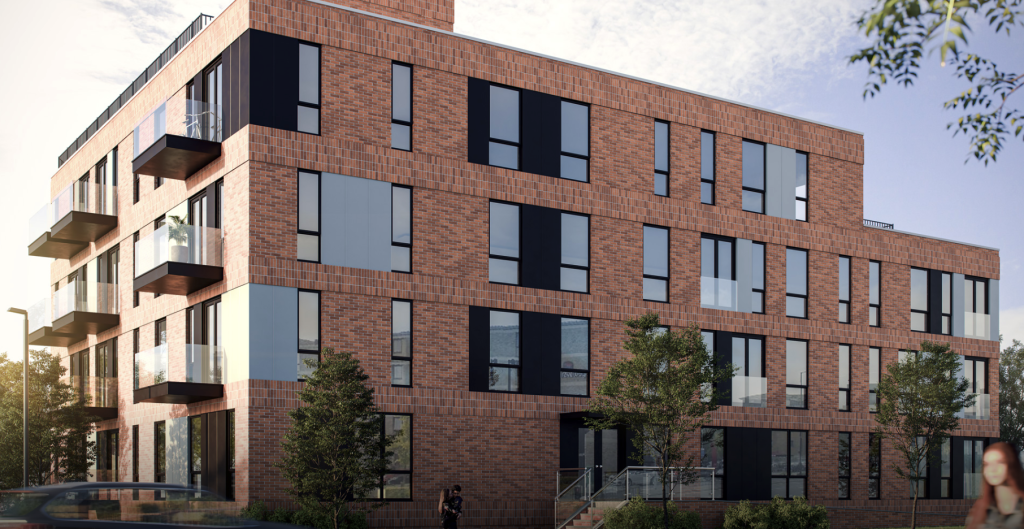Should Property Investors Worry About Falling House Prices?

In the wake of former chancellor Kwasi Kwarteng’s mini-budget, which pushed average mortgage rates to over 6% and “caused chaos in the mortgage market”, said the Financial Times (FT), high rates remain. In response to the lender scare, John Stepek (Bloomberg) said interest rates have risen sharply, resulting in a restriction on the amount potential buyers can borrow.
Since then, property market news has appeared bleak. Headlines have been filled with words like ‘crash’ and ‘plunge’. Additional threats of widespread unaffordability and negative equity forcing sales, repossessions and buyers falling through flooding the housing markets are being thrown around – but is that what the evidence actually suggests?
Have House Prices Dropped?
According to Nationwide’s Price Index, house prices fell 0.9% during October, then 1.4% in November. Annually the growth is still positive from last year. However, Nationwide reported a slowing from 7.2% in October to 4.4% in November. This is much less of a drop than anticipated.
Will There Be A Crash?
Due to a variety of factors, we predict a market slowdown but not a crash. This view is shared by industry giants such as Zoopla, who describe what’s coming as ‘a property market ‘shake out’ not a property market crash’ and Savills, who foretell ‘a correction, not a crash’.
The huge range of forecasts for next year takes some time to trawl through, but on the whole Jonathan Tyce, senior banking industry analyst at Bloomberg Intelligence sums it up well when he suggests that “a 5-10% decline in house prices” is “very likely in 2023.”
Why Are Prices Unlikely To Drop Further?
The first thing to note when huge crashes are forecast is that they have been extremely rare. This graph from JLL demonstrates it perfectly:
Secondly, whilst it is impossible to predict what will happen to the housing market with absolute certainty because this is the first time the market has been under these exact conditions, the conditions are more favourable in many ways than in previous times of market turmoil.
Improved Lending Practices
The 2007-2008 financial crisis was fundamentally caused by poor lending practices. In recent years, affordability due diligence is completed to avoid those with bad credit history and no equity being lent unaffordable sums. Now, according to JLL research, 62% of the UK’s 8.4m mortgaged owner-occupier households have at least 25% equity in their house. Another 34% have between 10-25% equity and 4% have between 5% and 10% equity- meaning there is much less distress in the market.
Whilst increased interest rates are challenging mortgage affordability (now taking an average of 26% of earnings versus 17% pre-pandemic) lenders have learned from the mistakes of the past and increased options to allow borrowers to meet their mortgage interest commitments, such as extending mortgage repayment terms or offering capital repayment holidays. Data shows that this has led to a lower rate of repossessions, now only 4,000 per annum (roughly 0.04% per year) compared to the 100,000 of the 1990s and 50,000 per annum during the financial crisis this will ‘mean that we see a trickle of additional stock coming to the market from those under financial pressure, not a deluge’.
The Housing Shortage
Housing stock has not been increasing quickly enough to match population growth and government housebuilding targets have not been met for over a decade; JLL forecasts that there will be a national shortfall of 610,000 homes over the next 5 years alone.
Additional concerns about the market being flooded with fall-throughs and forced sales are also proving to be unfounded thus far. According to Zoopla, only 1 in 15 homes formerly sold is returning to the market after the original sale has fallen through and they are not seeing any evidence of forced sales.
Low Unemployment
There has always been a correlation between an increase in unemployment and a decline in house prices; however, 2022 has seen record-high numbers of people employed and jobs advertised. According to the Office of National Statistics, unemployment currently stands at just 3.7% – a key contrast from circa 10% in the 1990s and well below the 6.7% average since 1971.
Redmayne Smith provides an end-to-end service to support you fully through your property investment journey. If you would like to see what developments we have available for you to increase your assets, take a look at our developments page here.


Leave A Reply
Your email address will not be published, Required fields are marked *